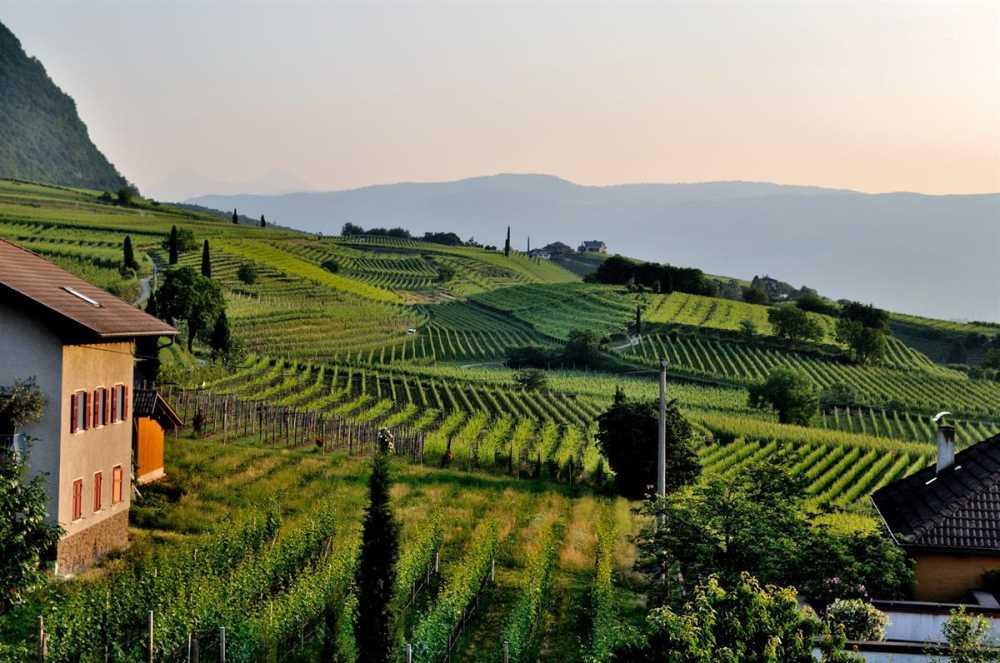Sips of beauty, exploring designer wineries

Sipping a good wine while strolling through a garden-vineyard is an unforgettable experience, satisfying all five senses in just a matter of seconds. For this reason, many wineries have equipped themselves to give their guests an even more engaging emotion that goes beyond the glass but at the same time exalts it. Some have worked with great architects, employing bold choices and hi-tech materials to present themselves as designer wineries that use company spaces to convey both the quality of the wine produced and the beauty of the surrounding landscape. Others, on the other hand, prefer a more conservative restoration, underscoring the link with the local land. But the goal is the same: to transform tasting into an experience of complete beauty and taste. Let's take a look at some more or less well-known designer wineries, which are worth visiting for a truly special toast.
Marqués de Riscal (Spain), the City of Wine
Founded in 1858, Marqués de Riscal was one of the first wineries in Rioja (fine DOC wine) and one of the oldest shops in Spain (Elciego, Basque Country). An archistar, the Canadian Frank O. Gehry, was needed to combine tradition and innovation, to build an iconic designer winery, a cornerstone of world architecture. The City of Wine complex offers visitors a priceless experience centred on the discovery of wine and its essence. But it's also a place of study and meetings, as well as a renowned hotel and restaurant.
The barrels of Calatrava
Of course if we're talking about architecture and design we can't forget about Santiago Calatrava. Bodegas Ysios is also located in Rioja (Laguardia, Basque Country): its design recalls the rows of barrels used to age wine, while the evocative undulating roof evokes the mountains behind the vineyard.
The crypt where Bordeaux is born
For many, Saint Emilion (Bordeaux, France) is the cradle of the best wines in the world. The Chateau Chaval Blanc winery, designed by Christian de Portzamparc, “floats” over the vineyards thanks to a futuristic white concrete canopy, while in the “crypt” below the ventilation is ensured by perforated bricks.
The “Winery in the Sky”
Considered a beacon of international architecture, the Waterkloof Winery (South Africa) rises on the surrounding hills, earning it the nickname "Winery in the Sky”. From its windows the view extends from the vineyards to the ocean.
A sip of Vermentino at Ca’ Lunae
Among the wineries that dot Lunigiana, land of Vermentino, Ca’ Lunae (Luni, La Spezia) stands out for the style adopted by its creators, the Bosoni family. A design that features reclaimed furnishings from the old farm, like the millstones and wrought iron benches, and conveys the image of a vineyard-garden rooted in the land.
Tasting in the garden maze
Can a winery also be a work of contemporary art? For sure. The Kraenzelhof maze-vineyard in Cermes (Bolzano) owned by Count Pfeil is designed to communicate a wow effect, alternating pathways and installations. Over the years it has become a meeting place for families, a museum for enthusiasts and a space for those seeking balance.
Art meets vineyards: Arnaldo Pomodoro
Arnaldo Pomodoro has played a key role in Italy in transforming some vineyards into designer wineries. In fact, his “Carapace” decorates the Castelbuono di Montefalco Estate (Bevagna, Perugia), symbol of longevity. And his “Cancello Solare” (Solar Gate) at the Ca’ del Bosco estate (Erbusco, Brescia) in Franciacorta is a bronze work that pays homage to the irreplaceable nourishment of grapes.
Archistar: from Renzo Piano to Fuksas, from Hikaru Mori to Werner Tscholl and Piero Sartogo
The Rocca di Frassinello Estate in Castellina in Chianti (Florence) bears the signature of Renzo Piano: an elegant but functional winery featuring a unique red tower. The “Bubbles” by Fuksas, unveiled to celebrate the 225 years of the Nardini distillery in Bassano del Grappa (Vicenza), are another work of art. The work evokes the alchemy of distillation and is part of the company grounds, designed by landscape designer Pietro Porcinai in the 80s. The Feudi di San Gregorio (Sorbo Serpico, Avellino) by the Japanese architect Hikaru Mori is a magical place, already exhibited twice at the Biennale di Venezia. Water features, gardens and rose gardens make this winery not only the ideal home of wine, but a centre that transmits the values of the territory of Irpinia. After designing museums and renovating castles, Werner Tscholl designed the new branch office of Cantina Tramin in Tremeno (Bolzano) in 2008. The project has earned a number of awards for its use of materials (wood, iron, glass and concrete) and for its ability to merge past and future in a work of "architecture/sculpture”. A modern design, on the other hand, characterises the Ammiraglia Estate (La Capitana, Grosseto) of the Frescobaldi family, where a Tuscan IGT red wine is produced. The building, designed by Piero Sartogo and Nathalie Grenon, follows the curve of the hill that hosts the cellar and ensures a constant temperature of 18°C. The roof of the Ammiraglia, inaugurated in 2011, is a garden covered with plants to protect the microclimate below.
Just like a designer winery should be...which one do you want to visit?
